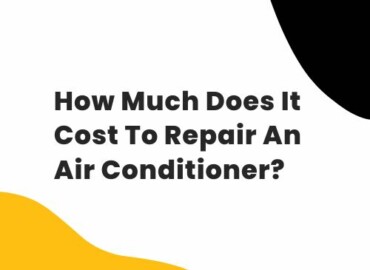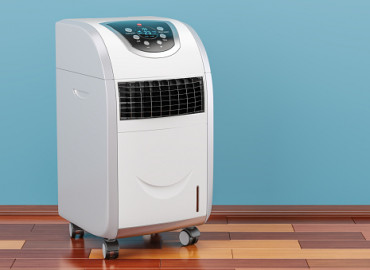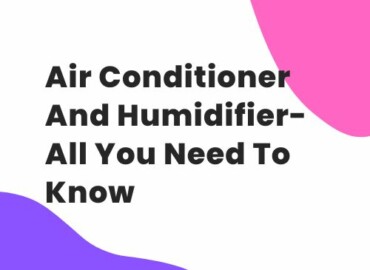5 Reasons to Buy a Heat Recovery Ventilation System
When it comes to a proper ventilation system, all modern homes require one that will not only properly ventilate the home with fresh air from top to bottom but will also provide airtight performance, saving you money on heating and cooling bills. To that end, many people choose to turn to HRV installation services to help ventilate their homes.
Why is ventilation important? A home that’s improperly ventilated is cold in the winter and hot in the summer. It also allows moisture to form in damp areas, creating dangerous mold situations. It’s not only uncomfortable, but it also becomes bad for your health, especially in cold months when you and your family are forced to stay indoors. Ventilation is important; it creates energy-efficient homes. The question then becomes: what ventilation system is appropriate for your home?
What is an HRV system?
A Heat Recovery Ventilation System (HRV) is a mechanical ventilation system that enables better air quality within your home. In short, it uses the heat from extracted moist and stale air garnered from damp areas in your home (such as bathrooms, kitchens, or basements), and recovers that heat to supply filtered fresh air that brings up the ambient temperature in your home faster. This saves money on heating bills and allows a fresher exchange of air in your home.
HRVs work almost as a human lung does – they use two fans and airstreams to take out moist, stale household air and ensure a flow of fresh air. They feature a heat exchange core that transfers heat from outgoing cooking, shower, or other hot air and inserts it into the incoming air stream, kind of like a car radiator.
5 Reasons How HRV systems are paramount to an energy-efficient home:
They provide a healthier atmosphere
Forget heating costs – in these pandemic times, we’re all concerned about staying as healthy as we possibly can. Ventilation plays a large role in the spread of respiratory and other illnesses, and it’s proven that well-ventilated homes provide healthier atmospheres, especially for those with chronic illnesses. HRV systems ensure a continuous flow of fresh air, making sure that mold spores don’t have a chance to grow, creating unhealthy conditions, especially for children.
They reduce drafts and leaks, making your home more comfortable
HRVs can recover a fair amount of heat in their outgoing airstreams, putting less pressure on your HVAC system to keep your home comfortable in cold climates. They also feature filters that keep out pollen, dust, or other particulates in the air from entering your home, making your home’s air cleaner, too. Leaky homes produce higher heating and cooling costs. HRVs, along with proper sealing, can help with this problem.
It can be used in all climates
While HRVs are more effective in colder climates, they can be used in places that don’t experience cold winters, as well. HRVs can be used in air conditioning, helping to clean and cool the air by taking heat from incoming fresher air and transferring it to the recirculated air conditioning air. The humidity is lessened considerably, allowing for a much more comfortable home. However, HRVs are much more popular in climates that experience cold, snowy winters.
They are efficient and can lower your energy bills
How efficient HRVs are dependent solely on their efficiency rating? Typical HRVs range from 55% to 75%, which at lower ranges, can show a bump in heating bills if the home needs to compensate for lost heat that the HRV isn’t converting properly. However, a properly installed, high-quality HRV can provide a range as high as 93%, allowing for an airtight, well-ventilated home that will be comfortable in all weathers.
They can help lower carbon monoxide in the air
Many household appliances utilize gases for combustion, like gas stoves. This can allow off-gassing into the air, creating a polluted home that’s dangerous and can make inhabitants ill. Other common sources of carbon monoxide can include space heaters, wood stoves or fireplaces, or leaky chimneys.
The constant airflow that an HRV system promotes can help remove stray gases in your home, allowing for a healthier, fresher breathing experience (which is especially important when you have children or elderly, ill people living in your home!).
When isn’t an HRV system appropriate?
While they certainly do provide much better ventilation for your home, there are instances that an HRV just won’t cut it. If you live in a hot, humid climate, an HRV system won’t be as efficient, because it works with the heat in humidity in your home’s air and it may not eliminate the humidity in the air, placing a greater load on your air conditioner. In this case, you’d be better off with an Energy Recovery Ventilation system, or ERV, because it captures some humidity in the air in order to control the temperature and humidity levels inside a home.
However, if your climate is dry, you might consider an ERV to help retain humidity and more comfortable experience inside your home. But as has been mentioned, your home’s airtightness will be a huge factor in whether these systems will work for you.
Ready to increase the ventilation in your home? Find out what will work for you – find out how HRV can help you make your home healthier, more comfortable, and much more energy-efficient. Smile HVAC provides all kinds of work with heat recovery ventilation systems including HRV repair, installation, and maintenance. Contact us today at (+1) 437-777-4555 or book your appointment online.



